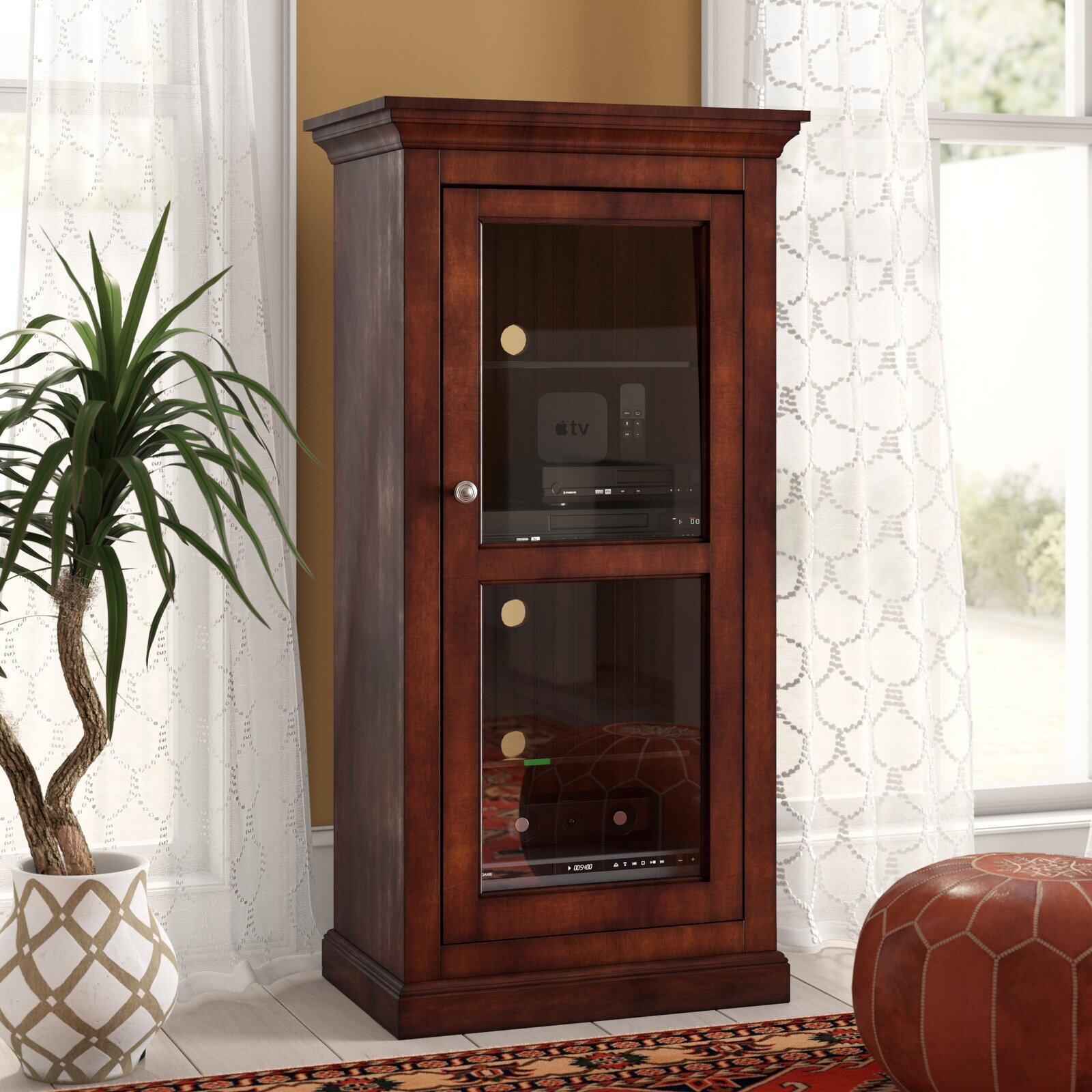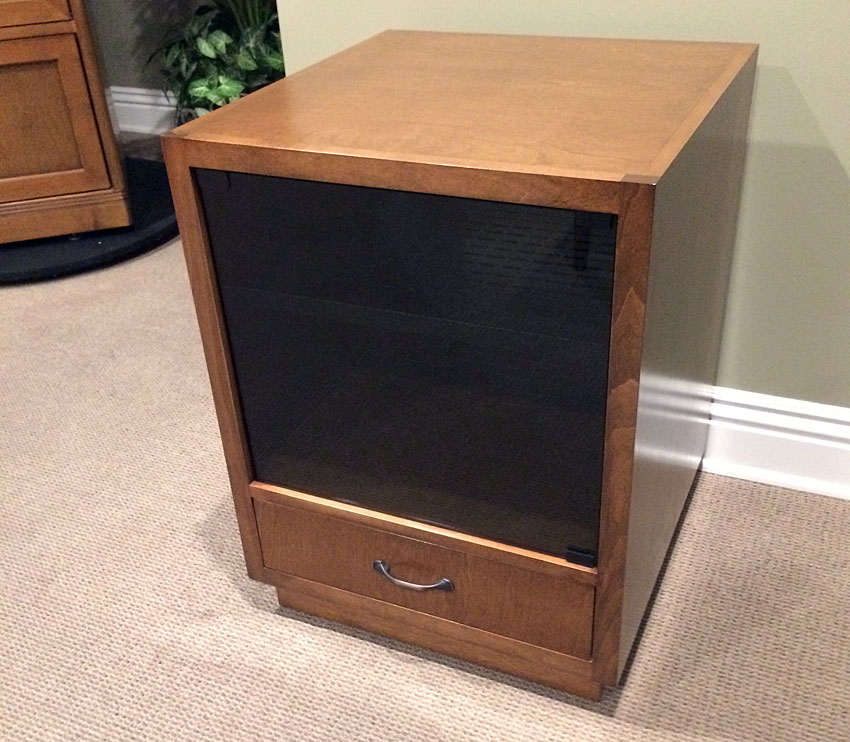Audio Cabinet with Glass Doors

An audio cabinet with glass doors is more than just a place to store your speakers and other audio equipment; it’s a statement piece that adds style and functionality to your listening space. These cabinets come in various designs, materials, and sizes to complement your audio system and interior décor.
Styles of Audio Cabinets with Glass Doors, Audio cabinet with glass doors
The style of your audio cabinet should reflect your personal taste and the overall aesthetic of your room. Here are some popular styles:
- Modern: Modern audio cabinets often feature clean lines, minimalist designs, and sleek materials like metal and glass. They are ideal for contemporary homes with a focus on simplicity and functionality.
- Traditional: Traditional audio cabinets tend to have more ornate details, such as carvings, moldings, and dark wood finishes. They complement classic interiors and create a sense of warmth and elegance.
- Contemporary: Contemporary audio cabinets blend modern and traditional elements, offering a versatile and stylish option for a wide range of décor styles. They may feature clean lines, natural materials, and unique design elements that make them stand out.
Materials Used for Audio Cabinets with Glass Doors
The choice of materials for your audio cabinet will impact its look, durability, and price.
- Wood: Wood is a classic choice for audio cabinets, offering warmth, durability, and a timeless aesthetic. Popular wood types include oak, cherry, maple, and walnut.
- Metal: Metal cabinets, often made from steel or aluminum, offer a sleek and modern look. They are durable, resistant to scratches and dents, and can be finished in various colors.
- Glass: Glass doors are a popular choice for audio cabinets, as they allow you to showcase your equipment while protecting it from dust and damage. Tempered glass is durable and safe, while frosted or tinted glass can add a touch of privacy.
Innovative Design Features of Audio Cabinets with Glass Doors
Audio cabinet manufacturers are constantly innovating to enhance both the aesthetics and functionality of their products. Here are some notable design features:
- Integrated Lighting: Some cabinets feature LED lighting that illuminates the interior, highlighting your audio equipment and creating a dramatic effect.
- Adjustable Shelves: Adjustable shelves allow you to customize the cabinet’s interior to accommodate different sized components and accessories.
- Cable Management: Built-in cable management systems help to keep wires organized and out of sight, creating a clean and clutter-free look.
- Sound Dampening: Some cabinets incorporate sound-dampening materials to minimize vibrations and improve sound quality.
Audio Cabinet Sizes and Dimensions
The size of your audio cabinet should be chosen based on the size of your audio system and the available space in your room. Here’s a table comparing different cabinet sizes and their suitability for different audio systems:
| Cabinet Size (WxHxD) | Suitable for |
|---|---|
| Small (24″x36″x16″) | Small to medium-sized stereo systems |
| Medium (36″x48″x20″) | Medium to large-sized stereo systems or home theater systems |
| Large (48″x60″x24″) | Large home theater systems or high-end audio systems |
Visual Representation of a Typical Audio Cabinet with Glass Doors
Imagine a sleek, modern audio cabinet with glass doors made of dark walnut wood. The cabinet has a minimalist design with clean lines and a subtle, brushed metal handle. The glass doors are tempered and have a slight tint to add a touch of privacy. Inside, the cabinet is illuminated by soft LED lights, highlighting the audio equipment arranged on adjustable shelves. The cabinet features a built-in cable management system that keeps wires neatly organized and out of sight.
Benefits of Using Audio Cabinets with Glass Doors

Audio cabinets with glass doors offer a unique blend of functionality and aesthetics, providing a stylish and practical solution for housing your prized audio equipment. They not only protect your gear from dust, scratches, and spills but also enhance the overall look and feel of your listening space.
Acoustic Properties of Glass Doors
Glass doors, while offering a clear view of your audio equipment, have a minimal impact on sound quality. The acoustic properties of glass are relatively neutral, allowing sound to pass through with minimal distortion or coloration. This contrasts with other cabinet materials like wood, which can absorb or reflect sound waves, potentially affecting the audio experience.
Considerations for Choosing an Audio Cabinet with Glass Doors

Choosing the perfect audio cabinet with glass doors is like finding the ideal soulmate for your beloved audio system. It’s a delicate dance of form and function, where aesthetics meet acoustics. You want a cabinet that not only showcases your prized possessions but also enhances their sonic performance. So, let’s dive into the factors that will help you make the right choice.
Size and Placement
The size of the cabinet is crucial. You need a cabinet that comfortably accommodates your equipment without feeling cramped. It should also fit seamlessly into your room’s layout, without obstructing walkways or creating a cluttered look. A good rule of thumb is to measure your equipment and add a few extra inches for ventilation and ease of access. Placement is also important, as it can significantly affect sound quality. You want to avoid placing the cabinet near walls or corners, which can cause sound reflections and distort the audio. Ideally, the cabinet should be placed in a central location, away from any potential sources of vibration.
Style and Materials
The style of the cabinet should complement your room’s décor and personal taste. Think about the overall theme of your space, whether it’s minimalist, modern, traditional, or eclectic. You want a cabinet that harmonizes with the existing furniture and décor, creating a cohesive and stylish look. The materials used in the construction of the cabinet also play a significant role in its aesthetics and functionality. Consider materials like wood, metal, or glass, each offering unique visual appeal and sound-dampening properties. Wood cabinets, for instance, can add warmth and sophistication to a room, while metal cabinets offer a sleek and modern aesthetic.
Budget and Functionality
Setting a budget is crucial before embarking on your cabinet hunt. It helps you narrow down your options and prevent overspending. Consider your needs and priorities, such as the size of your equipment, the level of functionality you require, and the desired aesthetics. You can find audio cabinets with glass doors in a wide range of price points, from budget-friendly options to high-end luxury models. Think about the features you need, such as adjustable shelves, cable management systems, and integrated lighting. These features can enhance the functionality and user-friendliness of the cabinet.
Types of Glass
The glass used in audio cabinets plays a vital role in its appearance and sound performance. Tempered glass is a popular choice for audio cabinets due to its strength and durability. It’s heat-treated to make it more resistant to scratches, impacts, and thermal shock. Laminated glass, on the other hand, is made by bonding two or more layers of glass with a layer of plastic in between. This makes it more resistant to shattering, as the plastic layer holds the glass shards together in case of breakage. Frosted glass adds a touch of privacy and elegance to the cabinet, while also diffusing light for a softer, more subtle look. Ultimately, the type of glass you choose will depend on your personal preferences and the overall aesthetic you’re aiming for.
Care and Maintenance
Caring for your audio cabinet with glass doors is essential to maintain its beauty and functionality. Regular dusting and cleaning will prevent dust and grime from accumulating, keeping the glass sparkling and clear. Use a soft, microfiber cloth to wipe down the glass surfaces, avoiding harsh chemicals or abrasive cleaners that can damage the finish. If you have spills or stains, clean them immediately with a mild detergent and water, ensuring the glass is completely dry afterwards. For wood cabinets, apply a wood polish or sealant periodically to protect the finish and prevent scratches.
Audio cabinet with glass doors – Audio cabinets with glass doors offer a stylish and functional way to showcase your audio equipment while maintaining a clean and organized aesthetic. These cabinets are often found in living rooms and home theaters, where they can add a touch of sophistication to the space.
For those seeking a luxurious experience, a similar level of comfort and elegance can be found on cruise ships with 2 bedrooms , which offer spacious accommodations and a wide array of amenities. Returning to the audio cabinet, the glass doors not only enhance the visual appeal but also protect the equipment from dust and damage, ensuring a longer lifespan for your audio investment.
Audio cabinets with glass doors offer a stylish and practical way to showcase your audio equipment, while also protecting it from dust and damage. These cabinets are often found in living rooms, home theaters, or even bedrooms, where they can be used to house everything from speakers and receivers to turntables and record players.
If you’re looking for a stylish and functional way to enhance your home audio setup, an audio cabinet with glass doors could be a great option, especially if you’re considering moving into a 2 bedroom flat in Shawlands , as this vibrant neighborhood offers a variety of housing options to suit different tastes and budgets.
Regardless of your choice, a well-designed audio cabinet with glass doors can elevate your listening experience and complement your home décor.
